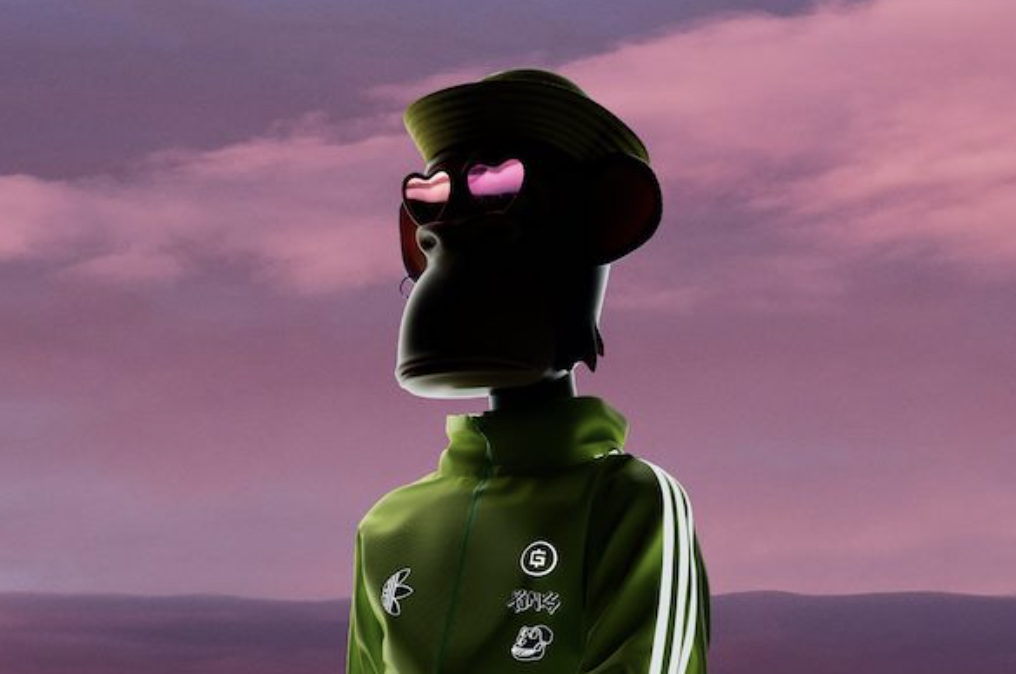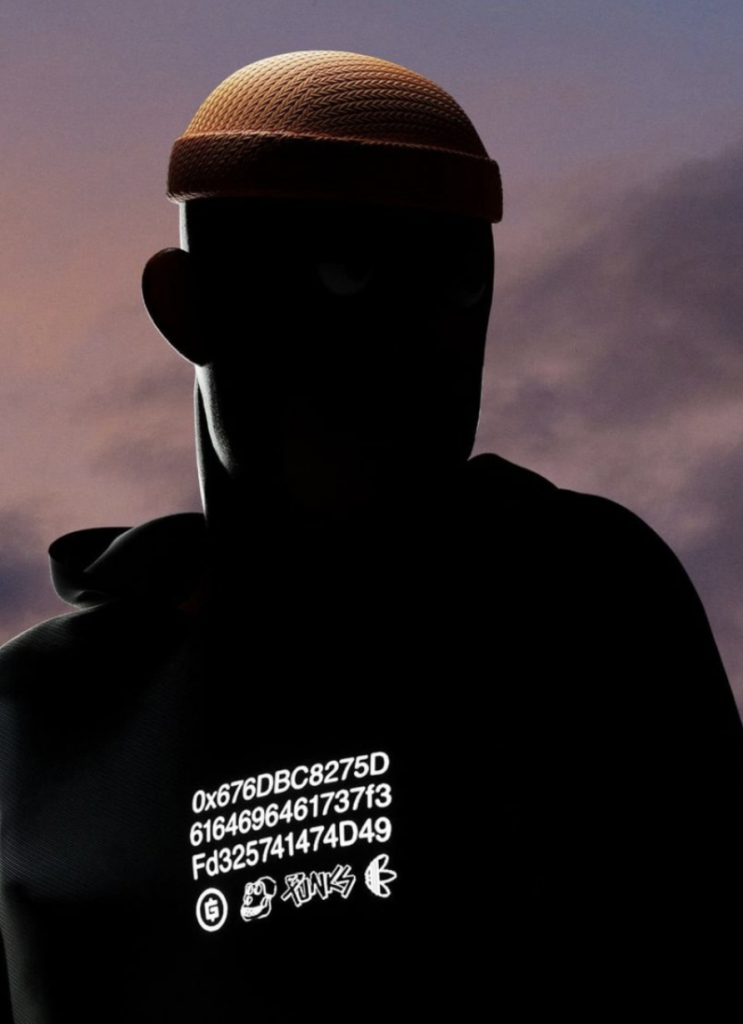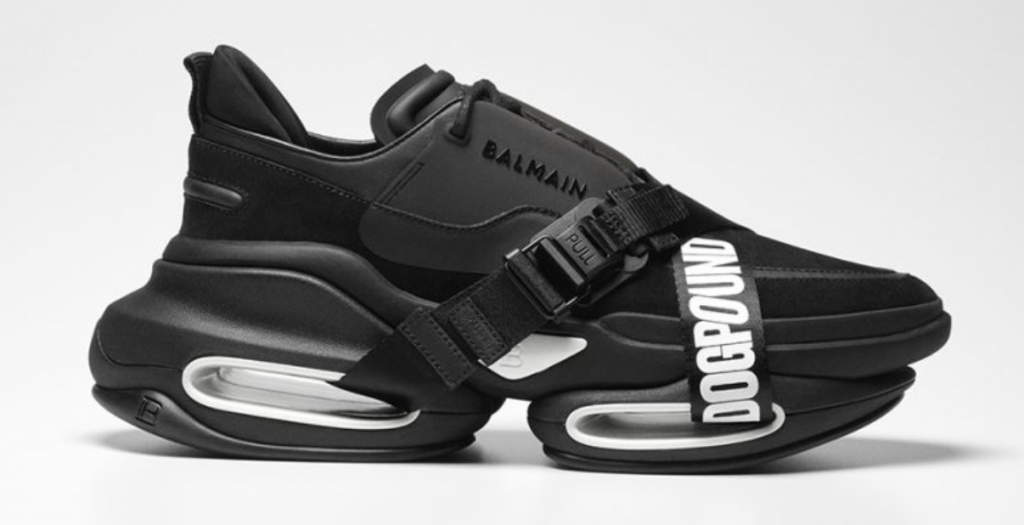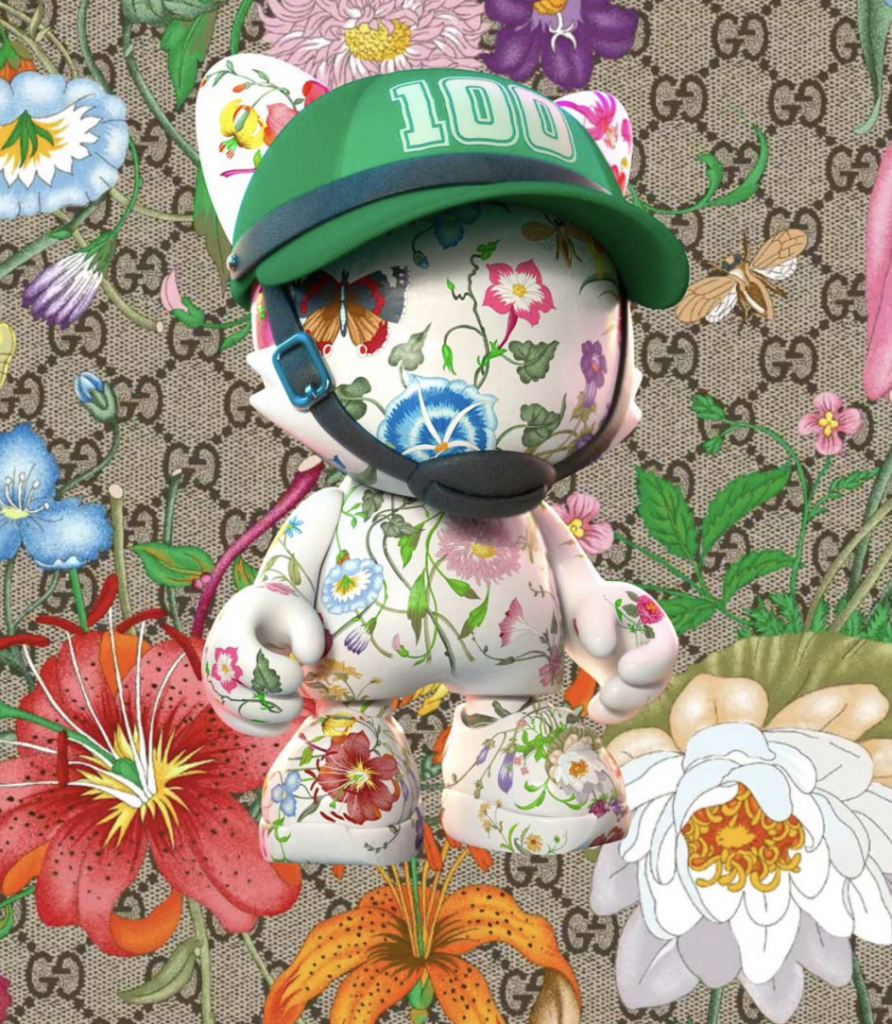Several fashion brands are jumping onto the NFT brand-wagon, metaverse bound. From couture to high street, all suffering from FOMO, desperate to get involved. And with them, the headline writers slavishly follow, applauding the auction prices as they spiral higher. But few have stepped aside to analyse what this means for their customers and collectors or ask what’s hip and what’s hype.
Shouting how they want to create digital assets with VIP perks and privileges for their customers, it feels that a lot of these drops get lost in noise but what do you actually get as a customer. What tangible utilities/ services are these fashion brands actually offering, if it’s not a physical item, then what is it? Where can you wear these NFTs and how interoperable are they?
I wanted to deep dive into the utilities surrounding some of these drops to better understand the value stream of these transactions.
For this article, I’ve grouped the type of NFTs fashion brands are creating into 3 categories.
- Brands that tie everything that is digital to a physical experience.
- Brands that are collaborating with artists to create collectable art.
- Brands collaborating with companies that focus on the collectible market.
What’s clear is that there are no brands doing this without some level of collaboration. They are all diving into the space to create an additional revenue stream for them (in the most), which is key in a declining retail environment.
According to the investment banking firm Morgan Stanley, metaverse gaming and NFTs could amount to 10 per cent of the luxury goods market by 2030, resulting in a €50 billion revenue opportunity. “There are three consumer benefits of NFTs- the investment aspect, status and community” says Morgan says Morgan Stanley equity analyst Edouard Aubin. “Many brands are focused on the second part, but there are many other things you can leverage and do.”
BRANDS THAT TIE EVERYTHING THAT IS DIGITAL TO A PHYSICAL EXPERIENCE.
RTFKTS
RTKFTS, a digitally native sneaker brand, who were recently acquired by Nike, are extremely forward thinking and innovative in this space. They recently partnered with Daz 3D, a 3D digital art company for a collection called CloneX. The iconic Japanese artist Takaski Murakami also took part in the Avatars’ design, coming up with multiple exquisite traits based on this colourful signature style. Each Avatar will feature a Murakami Drip property too.
The collection of 20,000 Digital Avatars, which are based on rarities aims to revolutionise the blockchain, allowing holders to carry them through the multiple metaverses making this the most interoperable NFT project thus far. Through a 3D file available to download, the Avatars can be used for a variety of activities, for creating social media content, gaming (fortnite), videos, and other features within the metaverse, as well as outside of it.
RTFKTS have added another utility to their advanced eco-system: native clone wearables: the ability to be able to forge the garment the clone is wearing, allowing you to have a physical garment as well as the digital option. You are also free to dress your clone however you want and personalise it to your best ability and there will be a cloneX new clothing brand in the future, with an array of designs for your Avatar to wear. Through their partnership with Nike, who can support with the manufacturing, there should be several possibilities to match the digital garment with a physical one. Considering the Avatars do not have bodies yet, being able to offering wardrobe is key.
In addition to the above, all future drops and existing CloneX and Vial owners will be getting a space pod to use as their home in the metaverse and to display their favourite art and more.
This particular project stands out as being one of the most exciting NFT launches because of the overall contribution to the thriving ecosystem in the CloneX universe. If you were lucky enough to purchase one at the starting price of 2 ETH, then you would be reaping the benefits now with the resale price on OpenSea between 14 ETH and 45 ETH.
Adidas Originals
Adidas have exploded into the metaverse and are collaborating with the most cutting edge, successful NFT creators in the marketspace. Last December, they launched a collection called “Into the Metaverse”, offering both physical and digital products in collaboration with trending metaverse specialists: PFP, king of community membership Bored Ape Yacht Club (BAYC), NFT influencer Gmoney and comics series Punks Comics. Adidas also bought a Bored Ape — the company named the ape Indigo Hertz — and outfitted it with a custom Adidas-branded tracksuit which has become part of the clothing to be accessed with the NFT.

Adidas are all about adding value through a community, so members of previous Adidas drops were prioritised and issued a special NFT badge which provided them with early access to the “into the metaverse” NFT. Only 8,000 of these were issued. Owners of the newly bought NFTs will benefit from VIP perks, akin to an exclusive fan club. These VIP perks will enable NFT holders to purchase special clothing drops and shape what kinds of products and experiences the company put together for its NFT-owning community.
The holders are guaranteed access to four exclusive physical products, at no additional cost, throughout 2022, on top of the inherent value of the NFT and the ongoing exclusive access for NFT holders. The physical items offered are the Adidas Firebird tracksuit, as worn by Indigo, a graphic hoodie with a blockchain address on it and Gnomey’s signature orange beanie which will also be featured in the digital comic being released. There are no sneakers involved with this project and it’s unclear when the garments will be available.

The digital items will be usable in the metaverse world of, “The Sandbox”, a virtual, interactive world where Adidas has bought 144 parcels of land called the “adiVerse” for 400 ETH, circa $1.2m. This means that users of Sandbox can use crypto to buy anything on that land in the form of NFTs. It’s also likely that Adidas will assist you in interactive with your favourite athlete soon. To round off their commitment to the future of the metaverse, Adidas have partnered with Coinbase, a crypto exchange where they have launched digital tokens, which will offer holders early access to future NFT drops
The 29,630 NFTs sold for 0.2 ETH and made Adidas $23 million. The NFTs are now selling from 0.002 ETH but one of the key privileges of owning one of these Bored Ape Yacht Club NFTs is the access to exclusive clothing drops which can be resold on secondary resale platforms for hundreds of dollars beyond their sale price. The real value of this is yet to be seen. The level of interaction and the immersive experience on Sandbox is also unclear as it’s yet to be built.
Gap
Gap who have been collaborating with Kanye have released a relatively small-scale hoodie NFT drop. This competitively priced collection, launched on the 13th Jan, comes in the form of collectible digital hoodies with varying degrees of rarity. In a move to be more sustainable, they have decided to launch on Tezos, the energy efficient blockchain.
The brand has partnered with the creator of the Frank Ape cartoon character, Brandon Sines to create the NFTs. There is a connection with a physical garment, the Gap x Frank Ape Sweatshirt, but first customers will have to buy the epic level NFTS which are priced around $415 (100 tez), before they can do this, they will have to buy four common and two rare NFTs.
This tiered approach encourages customers to collect hoodies to be able to lead up to the epic level so all in all a physical hoodie related to this project could cost up to $500, which is a huge leap considering you can buy one in their store for $25.
Gap have also not vocalised the end uses for these digital hoodies and it’s not clear if they can be worn in any metaverses. So all in all it’s a gaming experience, but there is no game, only buy as many NFTs as possible to reach the epic level.
Balmain
Balmain are the only luxury retailer to have pursued multiple NFT projects in the past year, they believe that the important part of these projects is to tie everything that is digital to a physical experience. Balmain CMO Txampi Diz believes “This is a perfect example of how I see the future of NFTs.” Last December the brand launched its third NFT project — a pair of NFT trainers accompanied by VIP experiences.
Balmain’s latest NFT drop, is in collaboration with Dogpound, an exclusive Manhattan-based gym boasting several celebrities as its members. The drop is launched in conjunction with a physical pair of trainers, which retail at $1,069 and are signed by Balmain creative director Olivier Rousteing. The NFT includes two pairs of trainers, a black and a white digital version of a BBold Dogpound collab and a VIP digital membership card.
In the vein of most NFT launches, but Dogpound members were granted early access to the drop. The digital NFT drop was auctioned on OpenSea and comes with additional perks depending on the auction price. If you bid 2.5 ETH ($7,000), you will receive signed Balmain x Dogpound BBold Sneaker signed by Balmain Creative Director Olivier Rousteing. If you bid 6 ETH, you will receive a one-on-one training session from Dogpound founder and celebrity trainer Kirk Myers, if you bid 10 ETH you will receive two entries to the upcoming Balmain Fashion Show and if you bid 14 ETH will receive two entries and two backstage passes for the upcoming Balmain Fashion Show. It is unclear to see what these actually sold for but there is one NFT on Opensea that sold for 2.5 ETH and is up for sale at 600 ETH which is $1.8 million, way more than the price you would pay to get the top VIP perks.

Balmain are using NFTs and VIP membership cards to keep their customers engaged and entertained. The membership cards will provide additional access privileges although it’s not clear what these are, especially if the lower tier auction is reached. It’s also not clear where you can wear these digital trainers and the resale price is difficult to read. All in all, unless you are a fan of Dogpound or a Balmain super fan, the NFTs have a limited value stream.
FASHION RETAILERS COLLABORATING WITH ARTISTS TO CREATE COLLECTABLE ART.
Selfridges
Selfridges are the first department store to launch a NFT collection, this January together with Paco Rabanne and art museum foundation Vasarely they’ve created an exhibition featuring 55 works by the artist, with 37 available for sale alongside NFTs created by Substance, a luxury NFT platform based in London. For sale between £2,000-£100,000 (about $2,700-$13,400), they will feature either Vasarely’s work or some of the first dresses created by Paco Rabanne, making them more expensive than most NFTs.
In a power move to create a more immersive retail experience, visitors will be able to experience the optical tricks, illusions and kinetic energy of Vasarely’s work across the Oxford Street store, including the storefront where each of the 24 windows will be individually wrapped in Vasarely’s designs.
Substance have also created a virtual interactive space in Decentraland, where customers can interact with Varsarely’s work but it’s unclear where else you can showcase or engage with these assets and interoperability seems limited at this stage. The collaboration is really focusing on making retail a more immersive experience and trying to find a more interesting way to engage with customers, drawing them back into a retail environment.
Funds raised from the sale of NFTs will go to the Museum Fondation Vasarely in France, for the artist’s archive and large-scale installations, to support restoration of key artworks. This is a good cause but an expensive purchase, with resale value unknown and the only real benefit being an immersive experience and a digital NFT.
Prada
Prada is releasing its first NFT in partnership with Adidas, but not as a clothing piece. Prada are using the power of communities and crowdsourcing to create their first Beeple-style collage, in a unique art inspired, patchwork NFT. The project, named “re-source” is linked to the Nylon collection that’s used by both Prada and Adidas Originals, which uses regenerated nylon yarn in select handbags and accessories. The majority of the proceeds from the primary sale and all secondary sales go to the Slow Factory, a non-profit organisation working to create climate-positive solutions and inclusive communities.
From the 24th Jan, anyone can submit a photograph, which will then be filtered and scrambled up so that 40% of the image is removed. This collaboration especially focuses on user creations and participation. Out of all the submissions, 3,000 individual photos will be chosen, and Adidas will then mint these on their platform. Once this happens, the owners can trade these openly on a secondary resale platform. For the real prize, there is a further twist: these selected images will be created into numerous tiles and formed into one large digital art piece designed and created by the coder Zach Lieberman. This one of a kind NFT will then be auctioned online on the digital art marketplace SuperRare and displayed as a large-scale installation in Prada and Adidas stores. The creators are possibly hoping to generate the same income from this as the Beeple’s $69 million “Everydays: The First 5000 Days,” which set a record for a digital artwork at Christie’s auction.
In terms of building their communities and access, existing Adidas “into the Metaverse “ NFT holders will be able to access 1,000 of these 3,000 spots. A further 500 will be reserved for people that failed to mint the previous NFTs and their “Into the Metaverse” discord channel, that’s invite only, will become a source to hear about the latest drops. However, it’s not clear what benefits the 3,000 people that get to mint their NFT’s will get in the future, we imagine the utilities will be to find out first about future drops and a higher level of access, but we will have to wait and see.
FASHION RETAILERS FOCUSING ON COLLECTABLES.
Gucci
The newest collaboration with Superplastics, a company making artistic collectible vinyl toys is not Gucci’s first foray into NFTs. Last year Gucci focused on a phygital experience in Roblox, where digital designs of their physical garment sold for more than the actual handbags
This project titled “SuperGucci” is focused on collectibles, this collaboration will be launched in a three-part series of ultra-limited “CrytpoJanky” NFTS. The designs are inspired by Gucci’s signature designs and patterns, reconstructed to the animated internet celebrities, Janky and Guggimon. These virtual humans created by Superplastic, exist in the real world, with the real models selling out in minutes. Superplastics NFTs are growing more popular by the day. They also have a very detailed and informative road map, which does add value in terms of what to expect in the future.
The collaboration offers 10 NFT designs, with a limited run of 500 in total.

In terms of access and early access privileges, Superplastic offered this out to its own community prior to the launch, 3 of the 10 styles will be limited to 50 a piece, plus an additional 3 unique NFTs will be available to SUPERPLASTIC NFT holders. Gucci intend to build and engage with the community through their newly launched discord channel and each NFT comes with a handmade, collectible ceramic sculpture.
In terms of resale value, it’s yet to be seen but it’s likely that the more collectables you have, the more they will be worth on the secondary market. Again, this collaboration is really about growing the community and creating new experiences for the customer.
CONCLUSION
It’s clear that one benefit of creating and selling NFTs is for brands to engage with customers in a more unique, entertaining way, creating privileges that make people want to buy into a brand and the benefits this provides. Through discord communities are being created and there is definitely hype and excitement that didn’t exist before.
Providing a physical product at least provides some level of tangibility and value for money but in all these digital and physical projects the details of when you can redeem the physical product are limited and it doesn’t seem as simple as matching an NFT with a physical garment.
The blockchain is decentralised and the new approach is user generated, however only one of these collaborations above involve user generated experiences.
Some of these brands do seem like they are literally just creating NFTs with no utilities other than exclusive membership and early access to future drops (which we do not know about) and of course the ability to show off your digital purchase on social channels.
A successful NFT project should embody ideas and values that people are proud to be associated with, display and desire, but as the resale market of the NFT is unpredictable then it’s important that brands focus on the added values of these NFTs. With any digital fashion garment, being able to wear these on your Avatar in a gaming experience through ready player me, or in Decentraland or Sandbox should be the basics, ultimately the value of a purely digital asset is very limited until interoperability is solved.
Right now, all of these projects seem like branding exercises which are no more than “rug pulls” where project leaders manipulate the perceived worth and then abandon the project. It’s clear that there is scope, but it feels that all the focus is on the perks of VIP memberships and community with little road mapping and focus on tangible perks.
By Louise Laing 07th Feb 2022